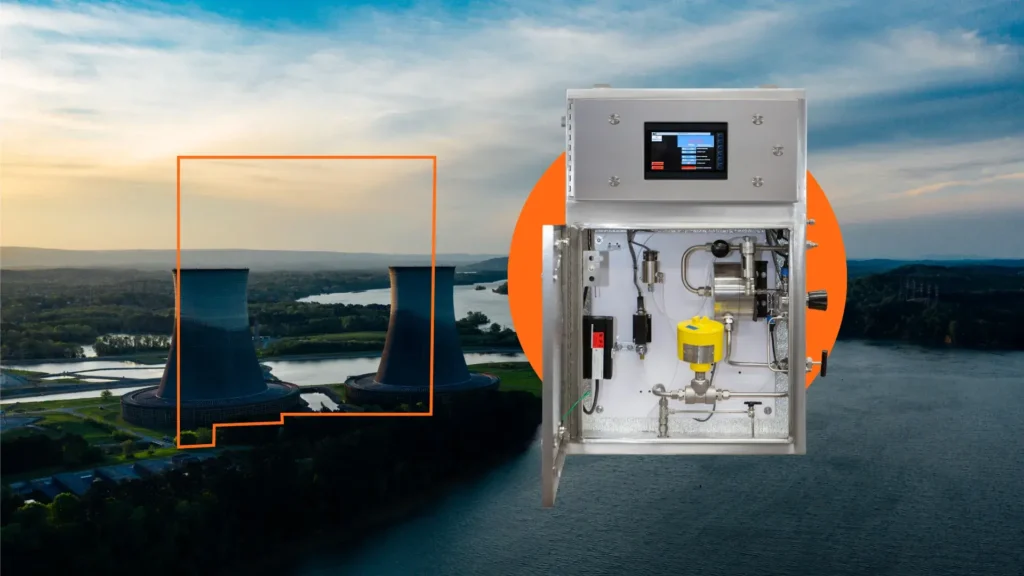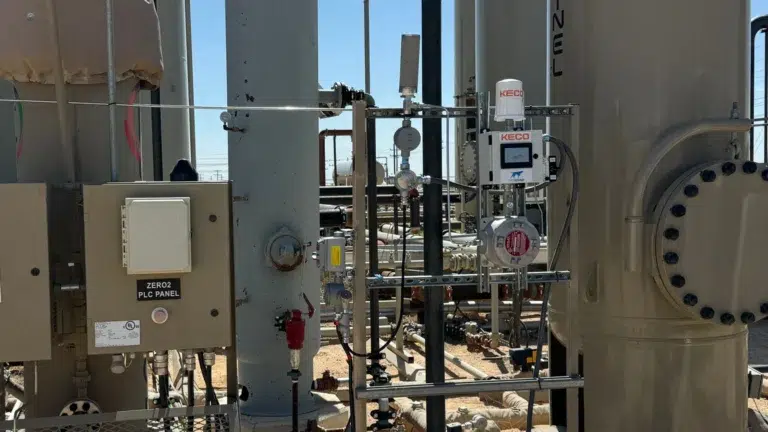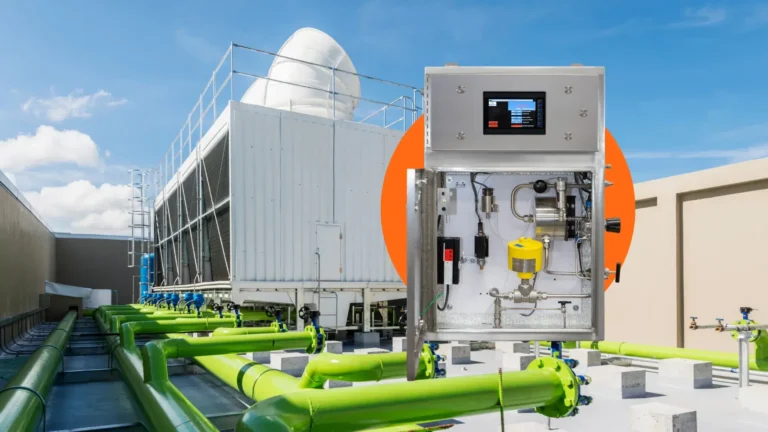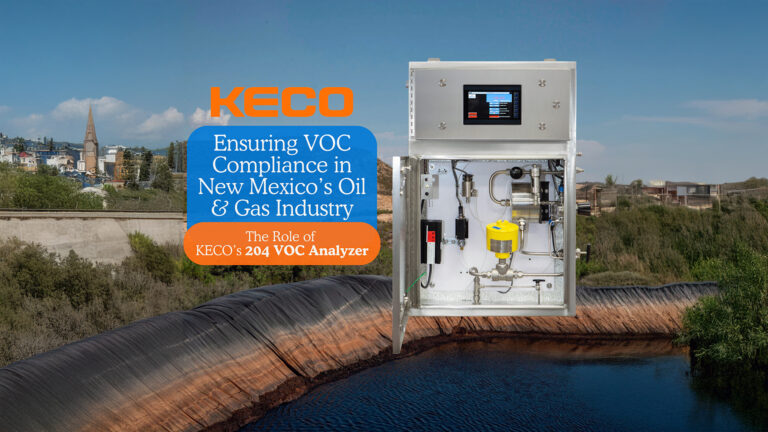Real-Time VOC Sensors: Meeting New Mexico Emission Standards
November 12, 2024
New Mexico’s Ozone Precursor Pollutants Rule (NMAC 20.2.50) requires facilities to control emissions of volatile organic compounds (VOCs) by staying within their Potential to Emit (PTE) thresholds.
Exceeding these limits can lead to costly penalties, making compliance a top priority. By using real-time VOC sensors, facilities can continuously monitor emissions and make adjustments to avoid breaching these thresholds.
Here’s a comprehensive guide to managing VOC emissions effectively with real-time data.
1. Understanding The VOC Emission Threshold For New Mexico Facilities
Each facility in New Mexico is assigned a VOC PTE threshold, set in tons per year (tpy).
This threshold reflects the maximum allowable emissions if no controls are applied. To ensure compliance, facilities must translate real-time VOC sensor readings from ppm (parts per million) or mg/L (milligrams per liter) into a mass emission rate over time.
2. Collecting Real-Time Data With VOC Sensors
VOC sensors provide continuous measurements of total VOC concentration in produced water, typically in ppm or mg/L.
Simultaneously, facilities should monitor the produced water’s flow rate in tons per hour (tph). By capturing both VOC concentration and water flow rate, facilities gather the essential data needed to calculate emissions accurately.
3. Calculate VOC Mass Emissions
With real-time data in hand, use the following steps to calculate VOC emissions and track them against your PTE threshold.

Step 1: Convert VOC Concentration To Weight Fraction
Convert VOC concentration from ppm by weight into a fraction by dividing by 1,000,000:

Step 2: Determine VOC Emission Rate In Tons Per Hour
Multiply the VOC fraction by the water flow rate to determine the VOC emission rate in tons per hour:

Step 3: Calculate Total VOC Emissions Over Time
To estimate total VOC emissions over a specific period (e.g., monthly or annually), multiply the hourly emission rate by the total hours of operation during that period:

By calculating this value, facilities can monitor their emissions in real-time and ensure they remain within PTE limits.
4. Compare Real-Time Emissions To PTE Threshold
Continuous monitoring allows facilities to keep a running total of VOC emissions. By setting up alerts in a Continuous Emission Monitoring System (CEMS), facilities can receive warnings if emissions approach the PTE threshold.
This early alert system enables quick actions—such as reducing water flow rates or implementing VOC control technologies—to prevent exceedance.
5. Proactively Managing VOC Emissions To Ensure Compliance
Real-time data enables facilities to make strategic adjustments to operations. By controlling water throughput or fine-tuning processes, facilities can stay consistently below their PTE limits.
Regular audits of VOC data also help ensure compliance with regulatory requirements, reducing the risk of unexpected penalties.
Example Calculation: VOC Compliance In Action
Consider a facility with:
- VOC Concentration: 50 ppm (0.00005 fraction by weight)
- Flow Rate: 10 tons per hour
- Operating Hours: 8,760 hours per year (continuous operation)

If the facility’s PTE threshold is 5 tons per year, these parameters indicate the facility is close to its limit. Monitoring emissions closely allows the facility to avoid exceeding the threshold and remain in compliance.
Ensure Compliance Through Advanced VOC Monitoring Solutions
Using real-time VOC sensors provides a proactive approach to managing emissions and ensuring compliance with New Mexico’s strict emission regulations. KECO’s advanced VOC sensors integrate seamlessly with data management systems, enabling automated calculations and real-time compliance monitoring.
Next Steps
For more information on how KECO can support your facility’s VOC compliance needs, complete the RFQ form below to explore customized solutions.
Request a Budgetary Quote for Your Application
Provide your project specifications, industry details, and end-use location to receive a tailored pricing estimate from our team.
Request Budgetary Price




